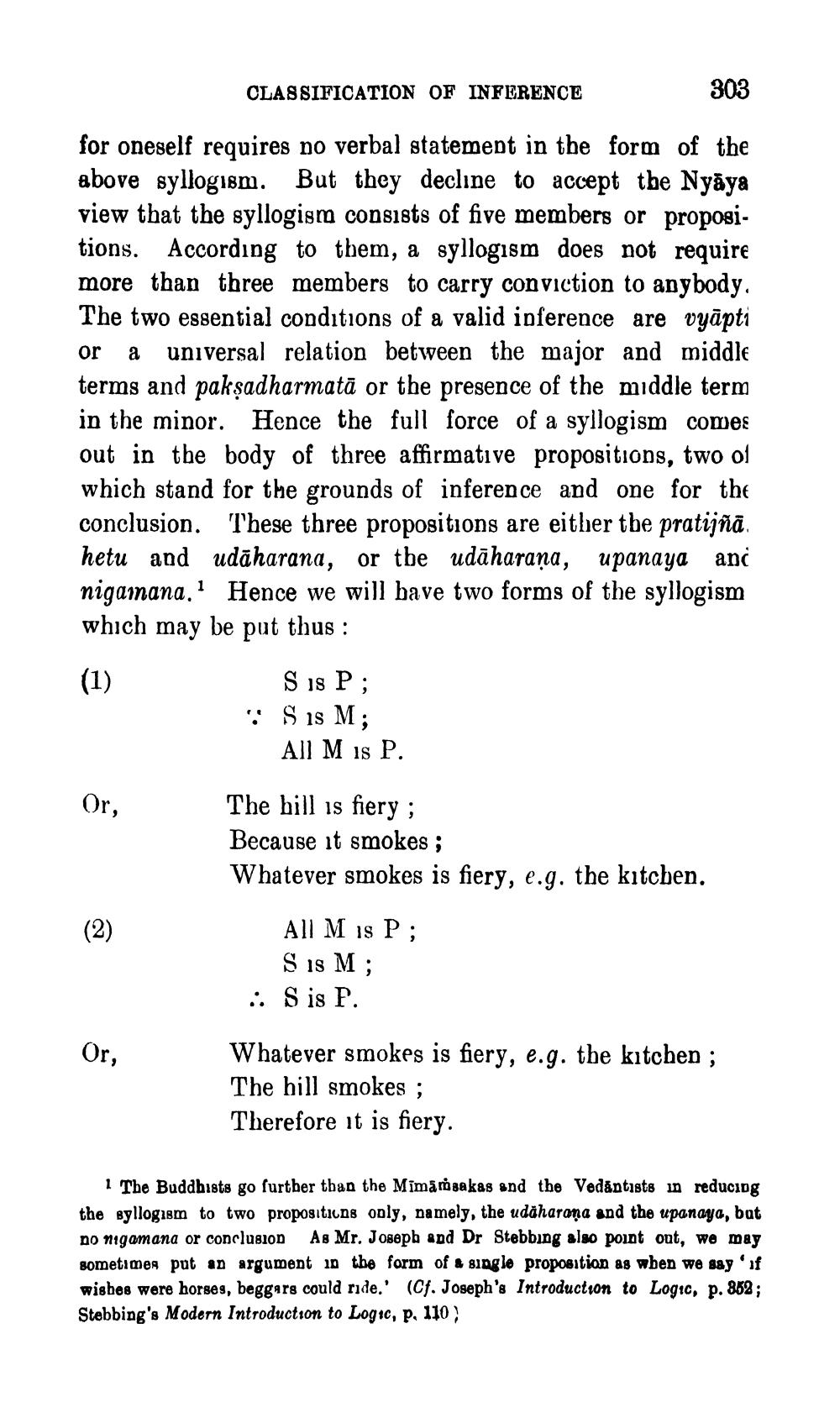________________
303
or a
for oneself requires no verbal statement in the form of the above syllogism. But they decline to accept the Nyaya view that the syllogism consists of five members or propositions. According to them, a syllogism does not require more than three members to carry conviction to anybody. The two essential conditions of a valid inference are vyāpti universal relation between the major and middle terms and pakṣadharmată or the presence of the middle term in the minor. Hence the full force of a syllogism comes out in the body of three affirmative propositions, two of which stand for the grounds of inference and one for the conclusion. These three propositions are either the pratijñā. hetu and udaharana, or the udāharaṇa, upanaya and nigamana.1 Hence we will have two forms of the syllogism which may be put thus:
(1)
Or,
(2)
Or,
CLASSIFICATION OF INFERENCE
S 18 P;
Sis M; All M is P.
The hill is fiery ;
Because it smokes ;
Whatever smokes is fiery, e.g. the kitchen.
All M is P;
S 18 M; .. Sis P.
Whatever smokes is fiery, e.g. the kitchen; The hill smokes ;
Therefore it is fiery.
1 The Buddhists go further than the Mimamsakas and the Vedantists in reducing the syllogism to two propositions only, namely, the udaharana and the upanaya, but no nigamana or conclusion As Mr. Joseph and Dr Stebbing also point out, we may sometimes put an argument in the form of a single proposition as when we say 'if wishes were horses, beggars could ride.' (Cf. Joseph's Introduction to Logic, p. 852; Stebbing's Modern Introduction to Logic, p. 110)




